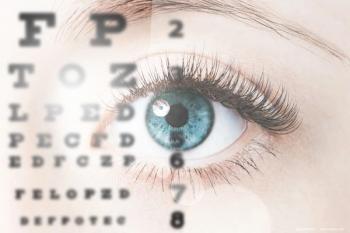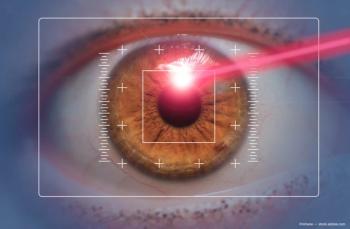
Fourier-based wavefront LASEK promising for enhancements in highly aberrated eyes
Preliminary results from small studies suggest Fourier-based wavefront LASEK may provide a safe and effective method for enhancing highly aberrated eyes that have had previous RK or LASIK, said Marguerite B. McDonald, MD, clinical professor of ophthalmology, Tulane University, and director, Southern Vision Institute, New Orleans.
Chicago-Preliminary results from small studies suggest Fourier-based wavefront LASEK may provide a safe and effective method for enhancing highly aberrated eyes that have had previous RK or LASIK, said Marguerite B. McDonald, MD, clinical professor of ophthalmology, Tulane University, and director, Southern Vision Institute, New Orleans.
The off-label procedures were performed with the S4 laser (VISX) with no automatic iris registration or pupil centroid shift compensation. Treatments were performed without alcohol using a 6-mm optical zone and 8-mm blend zone. In all eyes, a barely damp sponge soaked in 0.02% mitomycin-C was placed on the freshly ablated zone for 15 seconds followed by vigorous irrigation with balanced salt solution.
Postoperatively, a bandage soft contact lens was worn for 6 days, patients received a 6-day, tapered course of oral steroids for pain control, and comfort drops (1/20th of 1% tetracaine) were allowed as needed every 1 hour for 3 days. PostLASIK patients started oral 2 days prior to surgery to prevent the “Sands of the Sahara” syndrome.
The post-RK group included eight eyes, of which four had reached a 3-month follow-up visit. In that cohort, mean uncorrected visual acuity improved from 20/50 preoperatively to 20/16, mean best-corrected visual acuity improved from 20/25 to 20/20, mean SE improved from 1.89 to –0.42 D, and mean manifest cylinder was reduced from 1.16 to 0 D. In addition, mean higher-order aberrations had decreased significantly (44%) with mean decreases of 38% for trefoil and 100% for spherical aberration. There were no complications or adverse events.
The post-LASIK group was treated in parallel fashion and included seven eyes, of which five reached the 3-month visit. In that series, treatment with Fourier-based LASEK on top of the LASIK flap was similarly safe and resulted in a significant improvement in UCVA from 20/100 to 20/25 and a significant decrease in total higher-order aberrations.
“Compared with Zernike polynomials, Fourier analysis is able to extract more high fidelity data from the same Hartmann-Shack array, and by showing more detail, is thought to be more appropriate for treating highly aberrated eyes. These are small series and we need longer follow-up in a larger number of eyes to define the outcomes achieved using Fourier-based treatment in these highly aberrated eyes. However, we also need accurate, topographically guided ablation programs for eyes that are too highly aberrated to capture and analyze with Hartmann-Shack systems,” Dr. McDonald said.
Newsletter
Don’t miss out—get Ophthalmology Times updates on the latest clinical advancements and expert interviews, straight to your inbox.















































.png)


